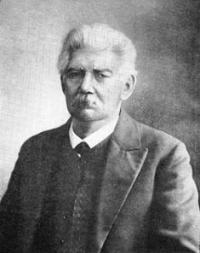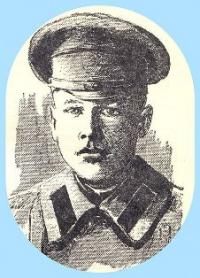Вы здесь
Archeology of Seven Rivers.


Kazakhstan Aarchaeological Tour.
“History teaches that wherever weak and ignorant people possessed something that strong and educated people wanted, the former always conceded this of their own free will”
Mark Twain.
Trips to archaeological sites in Kazakhstan.
As early as the XIXth century, the inquisitive inhabitants of Verny drew attention to a large number of ancient monuments, primarily mounds, cave paintings, traces of ancient settlements and burial grounds throughout the south of Kazakhstan.
In their notes, I. Sievers, an Irkutsk pharmacist and botanist, who in 1793 searched for healing rhubarb reached the southern foothills of Tarbagatai, and T. Atkinson, an English artist who visited the northern part of Semirechye (in the city Digging).
Of course, the indigenous people - the Kazakhs also knew about the graves, considering them the graves of the “Kolmaks” or Kalmyks, as the Dzungars were called then. The first Kazakh scientist Ch. Valikhanov, who first visited Semirechye in 1856, did not ignore archaeological sites.
In his notes, he mentions a piece of water pipe he picked up in Chingilda, on the right bank of the Ili River, where the ancient settlement of Yekee Oguz was located. Having received a good education and possessed a great curiosity and knowledge, he not only did not disregard the traces of history he saw, but also could understand and explain a lot.
He was the author of the archaeological work “On the Kyrgyz-Kaisak Graves and Antiquities in General”. The “discoverer of the Tien Shan” P. Semenov, who traveled to Semirechye in 1856 - 1857, describes in his works the monuments he saw (for example, the Dzungarian drawings on the banks of the Ili River), making an excursion into local history.
Almost all travelers, researchers, observers and geographers (zoologist N. Severtsov, columnist and writer N. Abramov, surveyor A. Golubev, artist V. Vereshchagin, etc.), local historians mentioned almost all the monuments.
Usually they were people with education - officials, engineers, officers, but sometimes just peasants. Even Governor Gerasim Kolpakovsky was involved in the archeology of Semirechye. He was especially interested in antiquities carried out by the waves of Lake Issyk-Kul. He wrote the article “On the Remains of Ancient Settlements in Issyk-Kul” published in the Izvestia of the Russian Geographical Society in 1870.
All this could not be unnoticed by the scientific community of Russia. Specialists - historians and archaeologists were sent to the region. One of the first professional scientists who visited Semirechye in 1862, 1868 - 1869 was a Turkologist and linguist V. Radlov, who excavated near the city of Kopal, in the Chui and Ili valleys, on the shores of Lake Issyk-Kul.
As a result of studying open mounds (only in 1862, more than 40 mounds were excavated from Semipalatinsk to Chinese Kuldzhi), Radlov concluded that their mounds were identical in Siberia, and hence the peoples who inhabited these lands.
He regretted that almost all the mounds were looted. In 1893 - 1894, the scientist orientalist V. Bartold worked in the region, covering archaeological, ethnographic and historical studies of the Talas, Chui, Ili valley and the basin of Lake Issyk-Kul, as well as the area of the city of Verny.
Possessing extensive knowledge, combining the accumulated historical information, Bartold was able to draw a general picture of the ancient history of Turkestan. A general review of the archaeological sites of Semirechye based on the research already done was made in 1898 by Professor of the Tomsk University V.M. Florinsky.
Among all the studies used by him, he gave the first place to the work of local historians - history buffs. There were a lot of them, starting from the land surveyor V.A. Andreev, who was the first to discover ancient Christian cemeteries near Pishpek (1884), the artist V.V. Vereshchagin, who made a sketch of the medieval Burana tower (1869), the artist N.G. Khludov, who opened the high-altitude gallery petroglyphs on the top of the Ferghana Range Saimaly-Tash (1902), doctor F. Poyarkov and botanist A. Fetisov to a professional orientalist (orientalist, that is, a specialist in the history and ethnography of the peoples of the East) Nikolai Nikolayevich Pantusov (although his position was far from archeology.
He served as assistant governor of the Semirechensk region). He studied so many monuments of history that the Imperial Archaeological Commission in St. Petersburg made it his in 1885 freelance employee, since 1894 he was officially elected its corresponding member, collaborated with the Moscow Archaeological Society.
That is, with the central scientific archaeological organizations of then-Russia. Pantusov searched, photographed and described monuments of ancient history throughout the region, excavated mounds and ancient settlements, collected all archaeological artifacts (antiquities) found by anyone, sending them to the Archaeological Commission, took care of stopping all predatory excavations and preserving the monuments stories.
And there were many such robbers, arbitrarily digging mounds and ancient graves. After all, often such graves kept gold objects, and unclean people wanted to profit from them. Encouraged by rights, experience and knowledge, Pantusov united all archaeological work conducted by local history buffs. We can say that the occupation of archeology became the main activity of Pantusov.
Thanks to him, the St. Petersburg Hermitage is greatly enriched by antiquities from all southeast of Kazakhstan and Kyrgyzstan. It should be noted that the leadership of the region, its bosses - governors - were sympathetic to the activities of their subordinate, releasing on numerous business trips.
Moreover, taking care of the preservation of archaeological sites, according to Pantusov, the governors and county governors ordered the prohibition of unauthorized predatory excavations, due to which many antiquities were preserved.
One of the main achievements of the archeology of the Semirechye was the discovery and study of ancient Nestorian (Christian) cemeteries, and the main merit belongs to Pantusov, who found and described many tombstones with Christian inscriptions deciphered by St. Petersburg scholars linguists-linguists (D.A. Khvolson).
Pantusov owns numerous articles on the archeology of the region. Pantusov was not alone in his hobby. At the call of the soul, other lovers were also involved in archeology: doctor by profession FedorPoyarkov, botanist and gardener A.Fetisov, who were able to make a significant contribution to the discovery of numerous historical monuments and their description.
Living and working as a general practitioner in Tokmak, and then in Pishpek, and traveling around the Chuy valley, Poyarkov was intrigued by the majestic Buran tower, towering in the bare steppes of the Chuy valley in Kyrgyzstan.
n 1885, he excavated in the ancient Christian cemetery near this tower, discovering more than 20 tomb stones with inscriptions and the remains of the fortress wall. Subsequently, Poyarkov studied petroglyphs in the region of Issyg-Ata mineral waters near present Bishkek, in 1899 he made several trips with the aim of finding stone sculptures - balbals (rough images of a man carved from stone). In the valleys of Bolshoi and Maly Kemin (mountain rivers in Kyrgyzstan near the border with Kazakhstan) he found up to 150 stone women.
Poyarkov accompanied his research with articles published in Memorial Notes in the Semirechensk Region. No less merit in the archaeological study of the region belongs to amateur botanist A.M. Fetisov. Back in 1878, he discovered traces of ancient fortifications in Kadzhisay on the shore of Issyk-Kul, making trips around the edge, looking for and fixing the ruins of human settlements that he encountered on the way. Together with Pantusov in 1885 - 1886, Fetisov excavated Nestoran cemeteries in the Chui valley, as a result of which more than a hundred burials were found, images of crosses and inscriptions taken from tombstones were sent to Petersburg.
Fetisov traveled a lot, always paying attention to the antiquities he met on the way. His special merit lies in the publication of travel essays. Excavations of the mounds, with the permission of the authorities, were also carried out by the Lepsin merchant E.M. Trusov.
Their services in archaeological surveys were offered by many Seven Rivers, in particular school teachers, officials, and military. In general, we must admit that, despite the absence of special scientific institutions in the region, amateur archaeologists, together with visiting professionals and scientists from St. Petersburg and Moscow, successfully worked in the field of archeology of Semirechye.
Thus, a picture of ancient history was created on the territory of Kazakhstan. Now this work continues with the efforts of scientific institutes, where professional archaeologists and historians with higher education work.
Much has already been discovered (for example, the "golden man" has been found), but there is still more to learn. After all, Kazakhstan is an inexhaustible fount of ancient civilizations, and to find out their history is a burning and exciting task.
One of the most interesting discoveries made on the territory of the Seven Rivers was the discovery of a copper altar, a table-lamp or an altar.
Authority:
Alexander Lukhtanov. "Essays on the history of the Seven Rivers."







